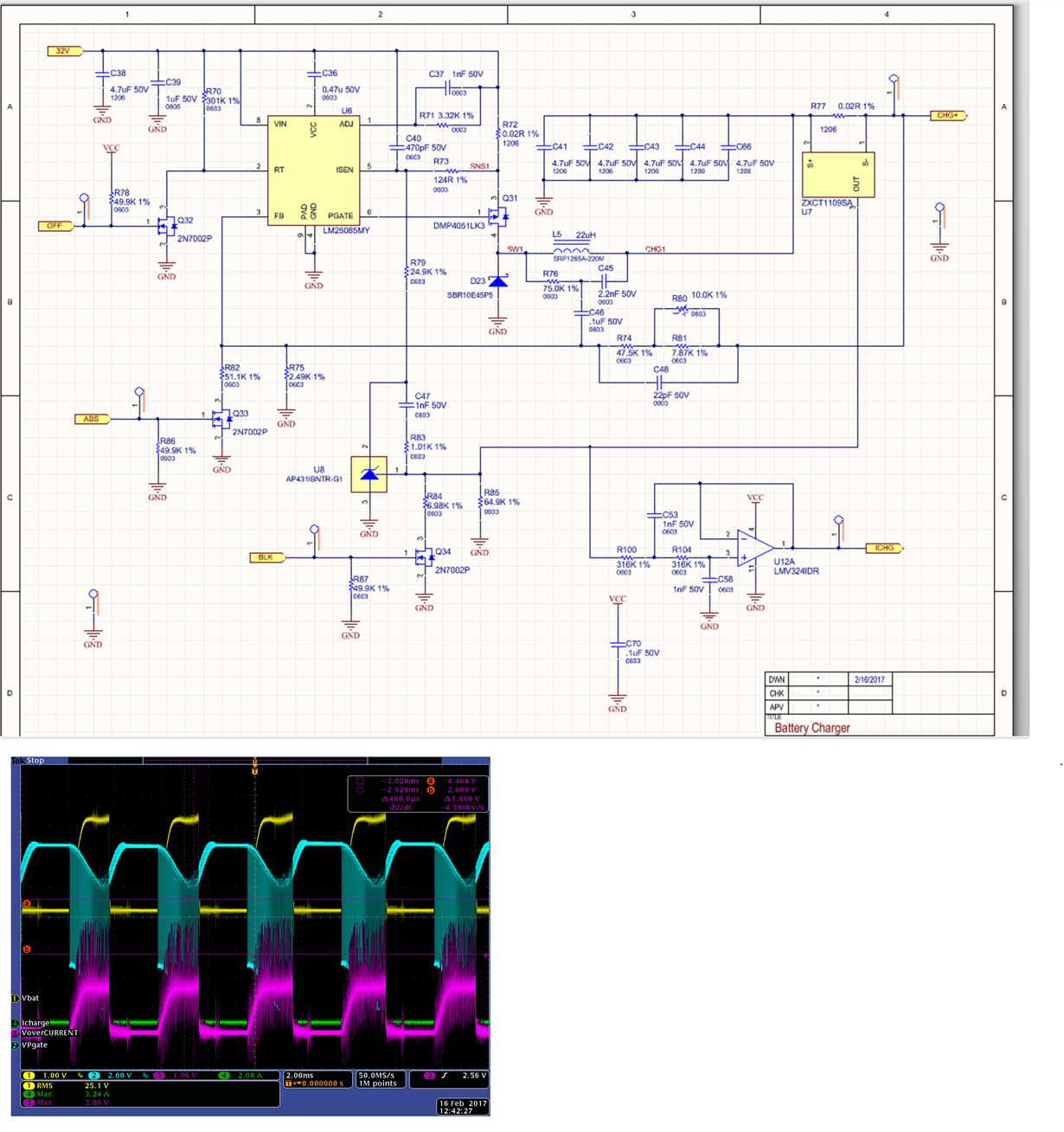I am using LM25085MY as a constant current battery charger to charge 24V/55AH lead acid battery with 5A current. The schematics are attached.
However, the PGATE switches correctly for only about 1 ms, then it stops for about 1ms. The pattern repeats. The screen capture is attached.
Could anyone give me some suggestion?



